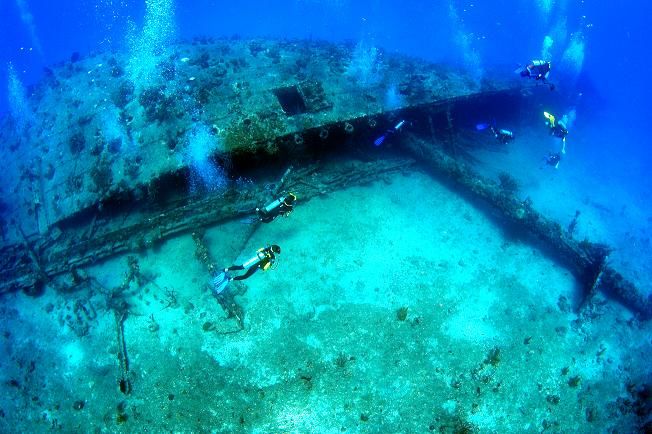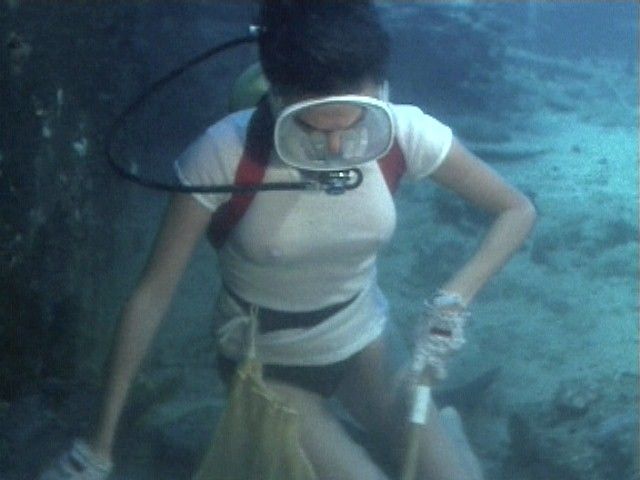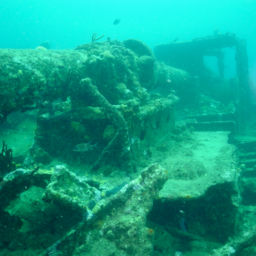Once you are familiar with shore and drift diving, accomplishing that level of competence, expertise and comfort, it is on to the next adventure in diving which just happens to be wreck diving. There are wreck diving courses offered by agencies such as PADI which teach you techniques for diving and exploring shipwrecks and how to avoid the common hazards, how to learn about the background of your favorite wreck, equipment considerations and techniques for entering the interior of ships keeping it intact, and finally, planning the strategy for that exciting dive taking you into new realms.
Wreck diving is also an impelling way to gain valuable knowledge of history while seeing and experiencing it first-hand. That tends to be the most rewarding part of your dive. Many advanced Open Water divers enjoy swimming around the wreck with careful attention paid to current while at the same time photographing the beauty of this man-made artificial reef of resplendency.

One wreck stands out as a “must dive” site to look forward to as you graduate on to that next level of expertise. The RMS Rhone is a 310 foot long Royal Mail Steam ship that attracts wreck enthusiasts to dive a maximum depth of 85 feet of water. It is located just off the coast of Salt Island in the palatial paradise known as the British Virgin Islands. In addition to the BVI’s being a leading dive destination, this wreck can boast the achievement of of one of the world’s best wreck dives. It is on the ocean floor in two sections. A two-tank dive is customary to get the most out of the magnificence of this glorious ship which holds plenty of history. The area around the site was turned into a national park in 1967. Marine life in these crystal clear waters is a real treat. There is very little penetration diving involved since the openings are large and roomy making paths for divers to swim through and enjoy the teeming marine habitat.
The ship sunk on a dreadful day back at the end of October in 1867. The captain had decided to anchor in Peter Island’s Great Harbor due to a yellow fever outbreak in St. Thomas, his normal destination. After being at dock for a while, the wind began to howl and the torrential rain started. The captain made a bad decision to try and make a break for the open water thinking the storm would pass. That became the demise of this steamship as well as the captain, crew and passengers. The Rhone was slowly pushed closer to the rocks and hit Black Rock Point with such a force that it went down and split in two pieces. Thus history was made due to this misfortunate episode.
As dive operators take you out to the site, the entire bow section can be seen from the surface attesting to the excellence of the visibility of the wonderful waters of the BVI’s. Descend downwards and a large barracuda affectionately named ‘Fang’ will eagerly greet you along with his friends, the school of sennets. Inside the hull you will find a treasure trove of Orange Cup Corals and schools of grunts and jacks. It is not unusual to come upon lobsters, eels and octopi. The second dive doesn’t take you as deep. The middle and stern sections keep you in a constant state of intrigue. Gaze in awe at the massive propeller and the distinctive drive train. Take underwater photos or video of the boilers and deck supports. Cast your eyes upon fascinating relics of tools, silverware and the silver spoon that Captain Wolley used on that fateful evening to stir his last cup of tea. Behold the magical moments of colorful corals and sponges.
If you haven’t gotten enough during the day, the dive is just as beautiful at night with so much to offer to satisfy your diving appetite. By the light of the moon, the cup corals and sponges turn the main compartment into an astounding kaleidoscope of orange and yellow light. Feast your eyes upon what nature has transformed into a gift for avid dive enthusiasts.
The Rhone gained overwhelming fame in 1977 as a scene from the adventure film, ‘The Deep’ was filmed right there. Most will remember that iconic scene when Jacqueline Bisset dove through the wreck in a T-shirt.

In addition, The Rhone has received honorable citations and awards over the years and draws hundreds of curious visitors each year.
It is not uncommon to get caught up in the thrill of the moment. Try to streamline your gear for a safer dive and so that you don’t hit any objects which could become obstructions for fellow divers. You must always remember to monitor your depth, air consumption and no-decompression times. Once you take all this into consideration, you are definitely ready to enjoy a most memorable dive experience.


